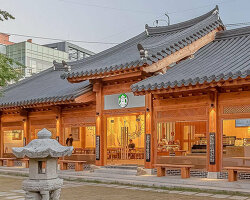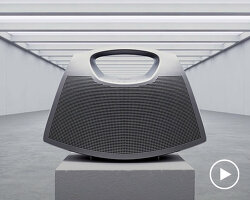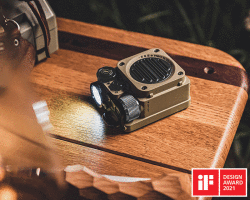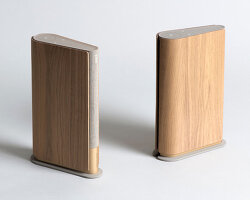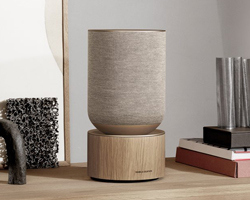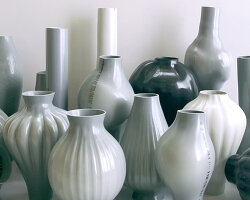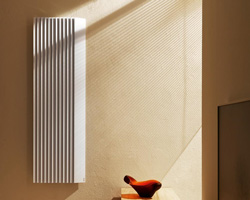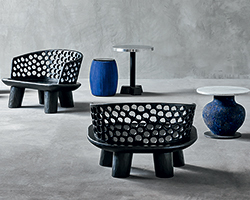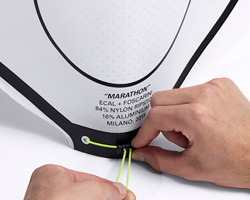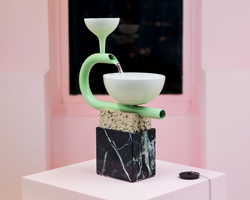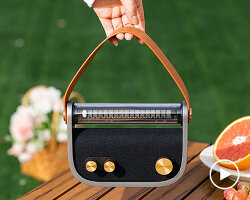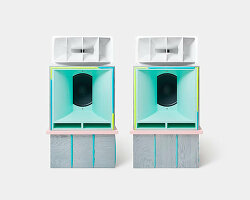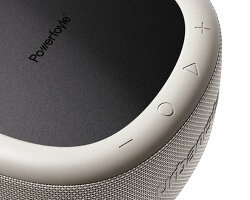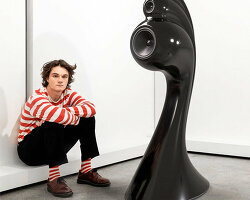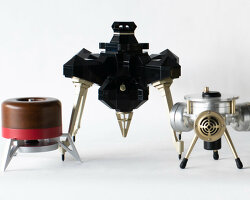on the launch of the beoplay P6, the image immediately impressed upon the designs of the ‘P2‘ and ‘A1‘. and this is of no wonder as all three have been created in collaboration with cecilie manz. another non-coincidence is the timing of the speaker’s debut, at milan design week 2018. although always delivering a sound quality that amazes, bang & olufsen’s products once more always deliver in terms of design and craft, with the P6 no exception to these traditions. in a size no bigger than a small vase, it is an object of scandinavian style mixed with advanced technology and pure materials.
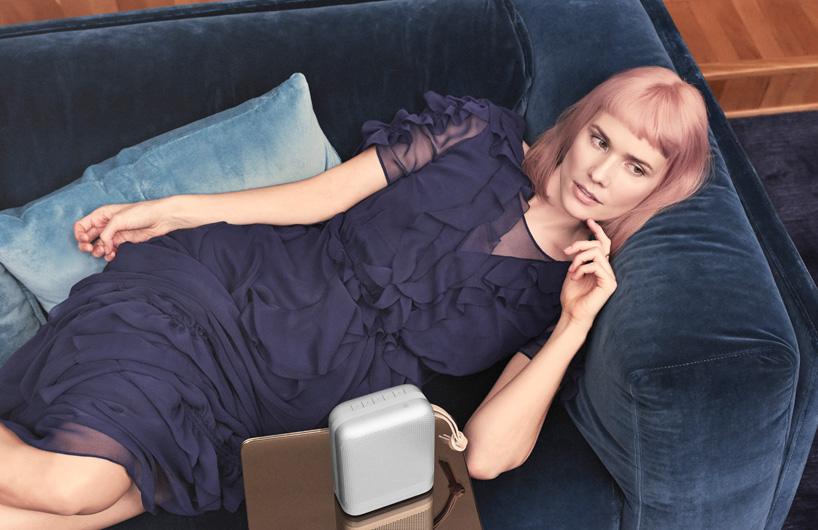
at the core of the beoplay P6, the speaker blasts rich and crisp sound, justifying the danish brand’s philosophy of innovating beyond the imagination. the speaker, small enough to grip in your hand and carry comfortably on weekend adventures, combats its powerful yet portable nature with a typical choice of materials; polymer, leather and aluminum. whilst the former ensures the unit stays firmly stable on a surface when playing, the latter initially defines a classic B&O aesthetic, but on closer look shows so much more.
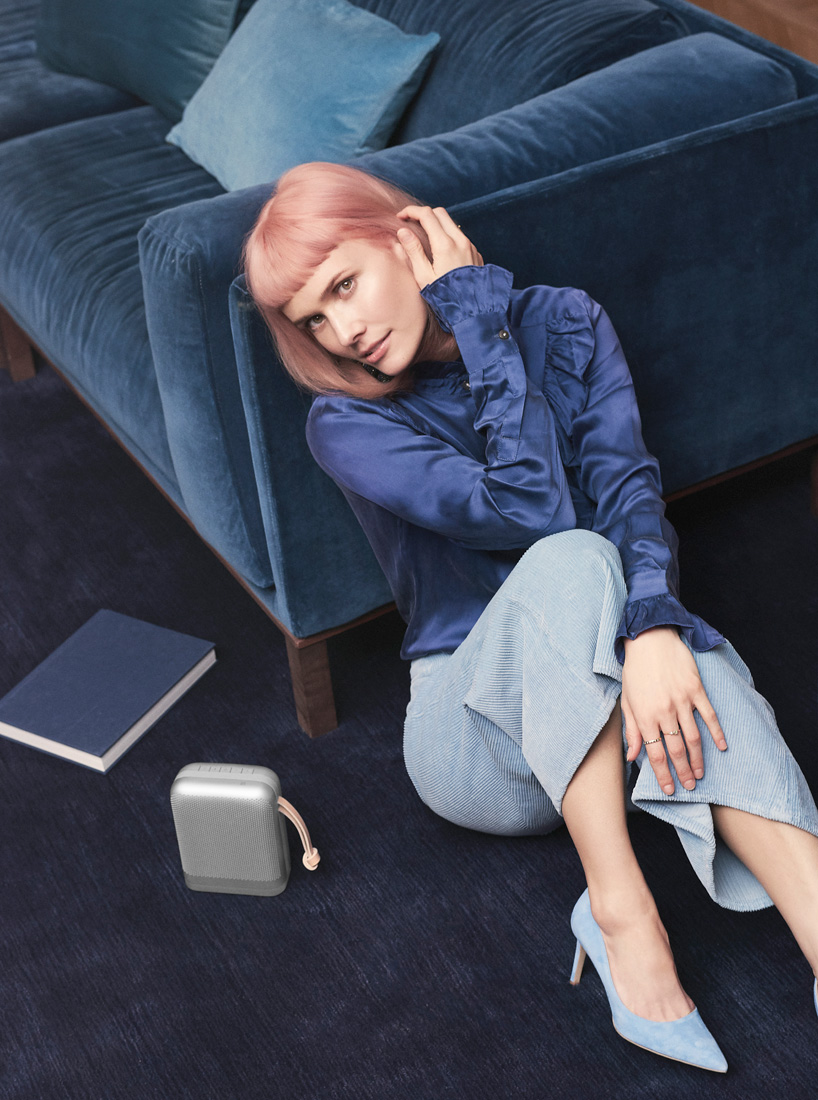
every detail of bang & olufsen’s products, from the inside and out, is worked to perfection, and the P6 is exactly that. the aluminum, bringing a classic charm of tactility and contrast, is a sculpted shape of innovation. its hole pattern details their focus on craft, its 360 sound distribution, and their devotion to material development. hundreds of iterations were made, learnt from, and reworked until the final form truly visualized their unique way of combining sound, design and craft for the user.
by speaking with kalle nordbo, concept manager of the P6, and cecilie manz, the designer, at milan design week 2018, we learnt exactly how the engineers and creatives of bang & olufsen collaboratively push the boundaries of what is possible in consumer electronics. play the P6!
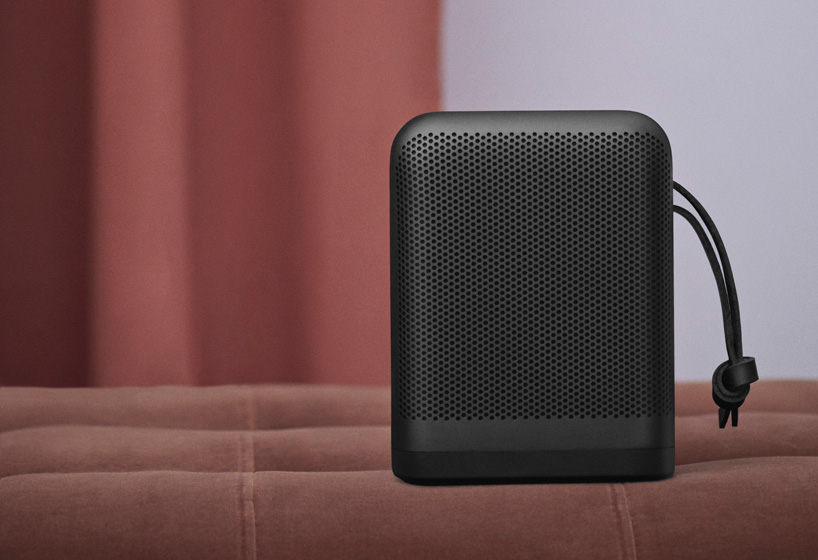
designboom (DB): introducing the P6 speaker, what makes the portable device different to the brand’s previous products?
kalle nordbo (KN): people want a speaker that is portable but also very powerful. for the ‘P6’ this is delivered from the acoustical idea of having a 360 sound thanks to the hole pattern. this detail is highlighted at the entrance of our showroom during milan design week, as we have blown up the pattern so that guests can see all the different parts of it. we wanted to have this very compact size so that users can grip it and hold it easily. we also wanted to challenge ourselves in terms of our production techniques because we are known for our aluminum use and how we treat the material. we really wanted to do that in a new way, one that arrayed the sound and dispersed it at 360 degrees.
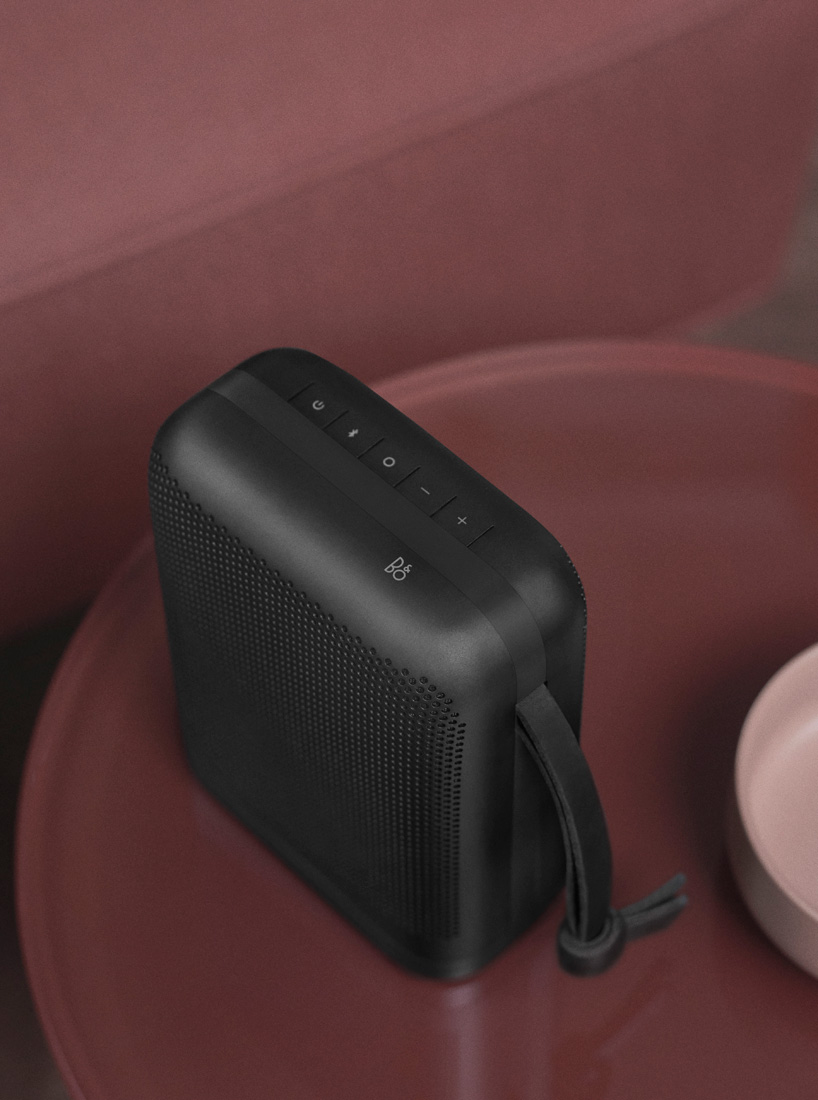
DB: so the difficulty in developing the aluminum was twofold: the shaping and indentation detailing?
KN: we wanted to show the sound disperse range through the actual design so the pattern needed to wrap around, which was a big challenge to achieve. cecilie manz had an idea of having the aluminum in two shells and joining them together in the middle with a core polymer. this was also a challenge because the technique, when you do a square shape, is much more difficult than rounded forms. the grooves are distributed evenly around the form but, in a square shape, the forces are different. also, the whole pattern was very difficult to make. we went through many stages of developing and testing the aluminum with many, many prototypes, mock-ups and productions. the first hundred models cracked from testing. along the way, we swapped different aluminum types to explore new opportunities. eventually, we found a way to do it and achieved the desired pattern. the testing was a very big part of the process.
at the same time, cecilie wanted an element of softness with this aluminum so, in the middle, we perforated a leather strap, which is a signature style for ourselves and cecilie. the very big knot creates a new kind of icon for the product that is almost a reference to furniture design. users can also grab it and really feel the contrast between the cold aluminum and the warm leather. this gives it a really nice homely feel.
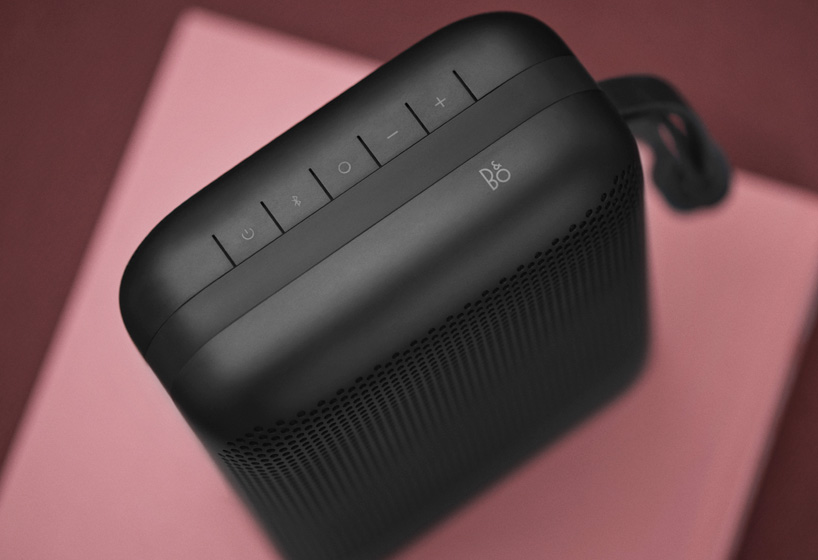
DB: the P6, as well as your previous speakers, all integrate a warm yet contrasting feature of leather. is this addition a key element to bang & olufsen design and style?
KN: for people in their homes, it is natural to place the P6 in the kitchen or living spaces and I think it is important to have these surfaces (leather and aluminum) that have contrast. this helps show that the product is not actually cold, as what is normally associated with aluminum. another important part of the design is its interface, which is very simple and has a very clear reference to our past products from the 1970s, the beomaster 6000. both designs have these kind of slots in it that are flexible. this made so much sense to us because the feature not only added to the function but also to the tactility of the product. furthermore, it also made sense to focus the user interface on the top and utilize it in this way so that it kept the overall impression of the design very simple.
DB: what is the different material on the base of the device?
KN: this is a silicon rubber that we used so that the P6 stays in place whilst playing. it offers much needed grip because, as the speaker is so powerful, it would move around on surfaces otherwise.
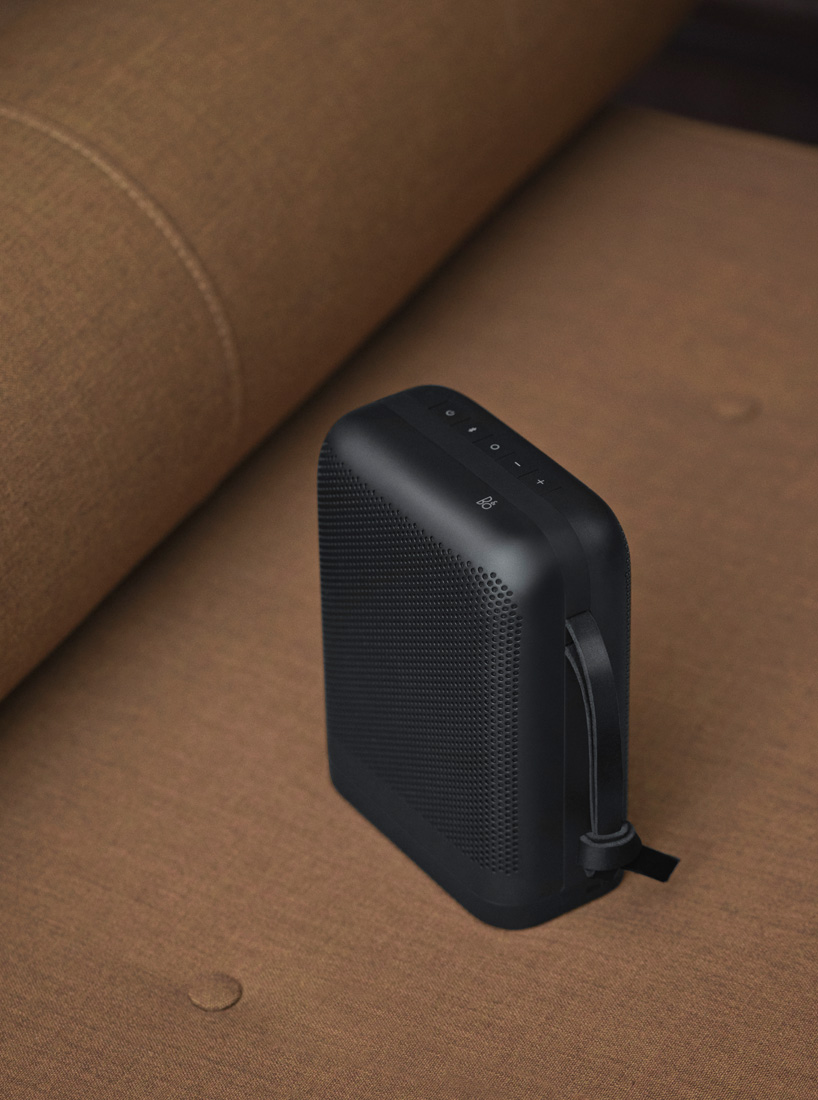
DB: following from what kalle said, how does the choice of materials play such an important part to the speaker and its design process?
cecilie manz (CM): the prototypes, which are on display during milan design week, show a very important fragment of the design process. besides the few models we are showing here, we have at least five times as many back in denmark. this is because the design process requires a lot of modelling, if you work in this quite old fashion way. once I got the assignment from B&O, it was stated that the speaker needed to be 1.5 liters – this is how sound is measured. this number is quite important because if it is too small then a nice sound cannot be created. the P6 has a really nice balance of size and sound. so with a size of 1.5 liters, the first exercise was to see whether the design should be long or tall. by knowing that it had to be very stable on a table, we started exploring these kind of shapes that can be seen in the final design. bang & olufsen and I had the wish to make it slightly smaller at times, which caused the volume to go up and down. we also had this wish that the aluminum should speak the loudest. this is also why, in the prototypes, some of the polymer casting is very narrow down the middle, but unfortunately, it was not possible to achieve. it was simply impossible to join the two shells otherwise so we needed more polymer.
with this knowledge, we then turned slightly and thought of different opportunities we could utilize the material in another way. that is why the leather strip comes out of the side. if you pick a road that you actually have to, then you need to find new possibilities going in that direction. I do not like to use the word compromise because the polymer and leather were not ones, it was development. I think that sometimes that word has been very misused because people seem to assume that then the design is not the one we wanted. that is definitely not the case in the design of the P6 speaker.

DB: with another product designed in collaboration with bang & olufsen, how did this latest project start?
CM: bang & olufsen and I have a very long history together. you could say that it started with the ‘beolit‘ that was seven years ago and, at that time, it was a tiny, portable speaker that people felt was amazing. it changed what was possible as it could be put into your pocket, much like the ‘P2’ as well. here, you could say we are going one step back on ourselves but that is not true. we are actually focusing on the main scenario, which is that it is portable and wireless but it is also most likely to be placed on a shelf or kitchen table and left there until the user takes it away for the weekend. for most of its life, the speaker is standing still. that is why the size was not as important this time. it was more important from an aesthetically point of view and about placing as many components to deliver as much good sound as possible. again, it is like a balance between the size and sound quality.
DB: how engaged are you with technology inside the speaker or is the aspect assisted by the concept manager?
CM: I have some knowledge about the technology but I am not a sound engineer. that is why we are very reliant on what input bang & olufsen give, which, in this instance, was the prototyping and development. that is how the dialogue starts and I need to listen to the expertise, as well as push back to challenge practices and ideas. we need to advance possibilities until bang & olufsen and I all know our limit and the direction we want to focus on.
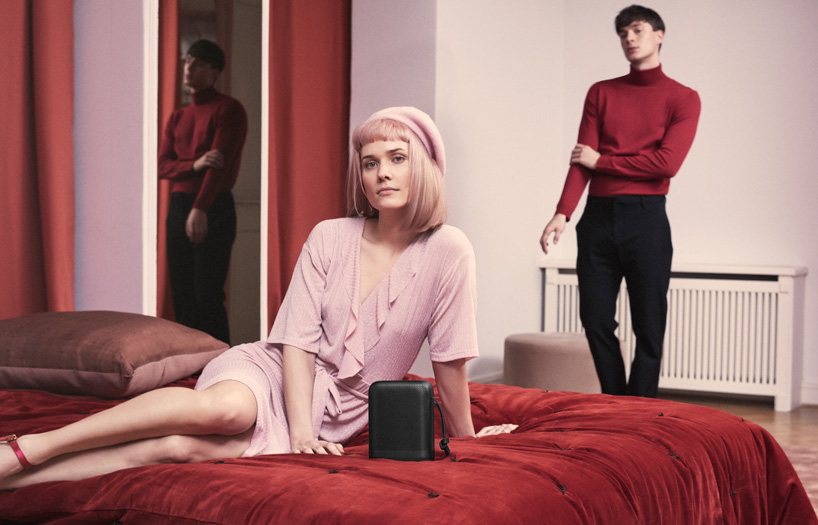
DB: as such a small design, the details truly define the whole object. how important was this kind of focus, especially in the case of the hole pattern?
CM: it is very important but it is also what is so difficult in the process. the development is all about small steps as we wanted to use as much aluminum as possible and so we had to see how much we could stretch it. I find that too many aluminum products are 2D in a way. alternatively, we used the material to create a 3D form, which is a whole new game entirely and is so complicated. every time we made one more groove or changed its position, we had to see whether the structure would work. we could not calculate whether the sound was going to better by adding or changing the positions of the holes. this explains why we had so many hundreds of tests, which were all done in such close collaboration with bang & olufsen.
DB: with its portability, how did the need for flexibility and adaptibility effect the designing?
CM: you could say that it is impossible to suit every interior, but a decent or modest design could be enough to blend it in. to achieve this as the designer, you need to look at the details all the time. if I were to name one element that helps the design in this character of flexibility then I would say that it is quite a modest design. it is not shouting or trying too much because it does not need to. it is about the two shells, the 360 degree sound and that is it.
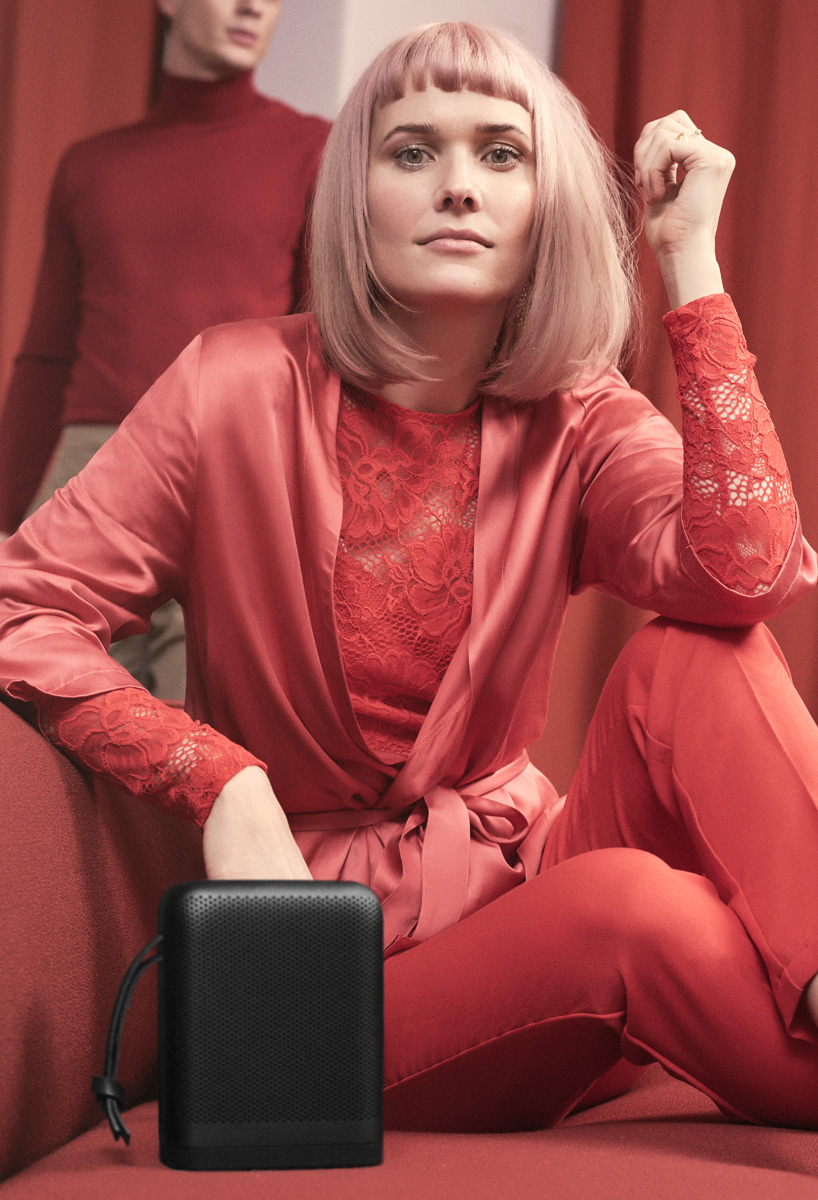
DB: like that of the P6, what is your focus with the leather material?
CM: after introducing this element with the ‘beolit’, bang & olufsen saw how great the reception was and have continued to use it ever since. the next project felt natural to use the material as well, so now we always feel that we need to use a leather strap. however, for this design, it is actually used to highlight and create contrast between the three core materials; aluminum, polymer and leather.
DB: will the design be welcomed in new colors and materials in the future?
CM: I think that there are already plans. the colors are interesting because black and neutral aluminum works well with most interiors. we will have to wait and see whether any other color works on the P6.
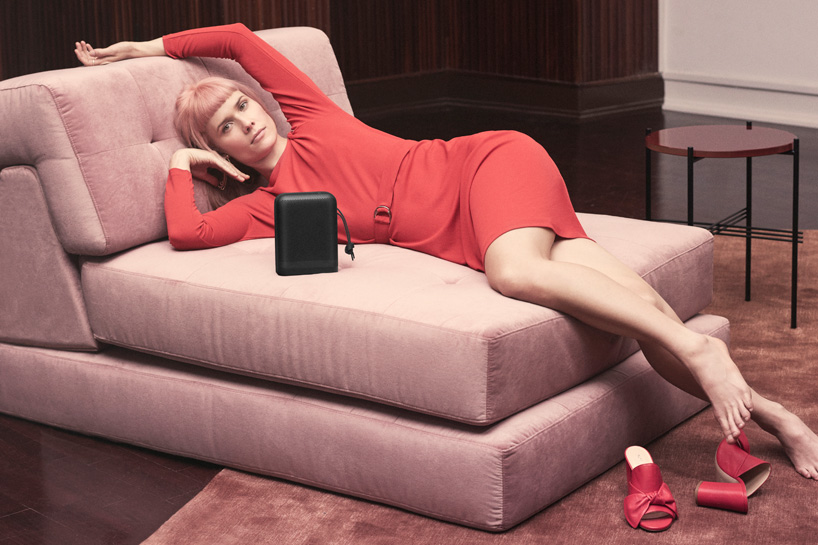
BANG & OLUFSEN (39)
MILAN DESIGN WEEK 2018 (143)
SPEAKER DESIGN (192)
PRODUCT LIBRARY
a diverse digital database that acts as a valuable guide in gaining insight and information about a product directly from the manufacturer, and serves as a rich reference point in developing a project or scheme.
